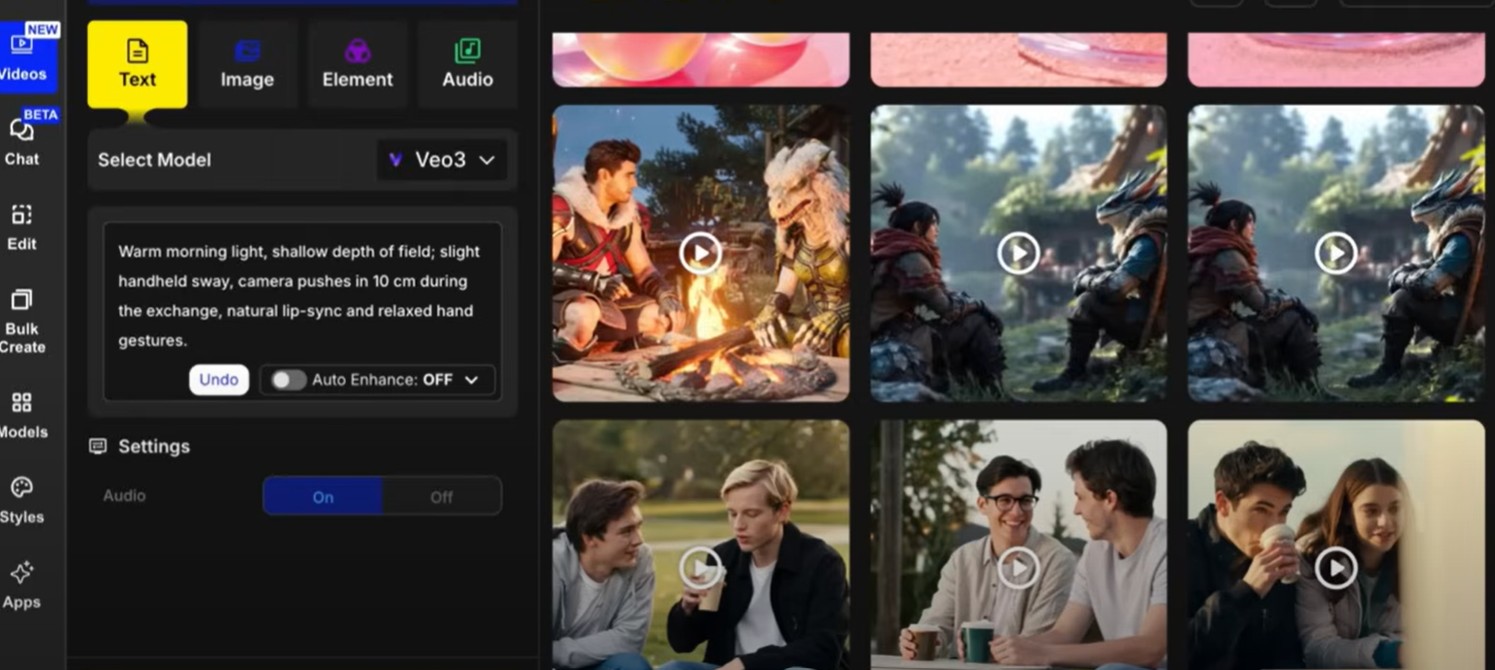Google has unveiled Veo 3, its most advanced AI video generation model yet, during the I/O 2025 event. Designed to produce high-quality videos with synchronized audio, lip-sync, and effects in a single prompt, Veo 3 represents a major leap forward in content creation technology.
As someone deeply involved in AI video production, I spent several days testing it. This review covers my honest impressions, highlighting what Veo 3 gets right, where it still struggles, and whether it’s worth the investment — especially for remote creators, digital entrepreneurs, and online educators.
What Is Google Veo 3?
Veo 3 is a multimodal AI model that takes a simple text prompt and generates a complete video, including visuals, voiceovers, ambient audio, and lip synchronization. It eliminates the need for multiple tools or complex editing workflows.
In essence, Veo 3 transforms how videos are created, combining everything into one seamless process.
Key Benefits of Veo 3
- Generates full videos from a single prompt
- Delivers realistic lip-sync and facial expressions
- Adds ambient sounds and voiceovers automatically
- Integrated into Google Flow for video editing and sequencing
Testing Veo 3: Real-World Examples
Podcast Simulation
I tested Veo 3 by generating a podcast-style interview between two AI hosts discussing Google I/O. The dialogue felt natural, their expressions were believable, and even their body language aligned with the conversation. A standout moment was when one host laughed in sync with a joke — showing impressive realism in emotional response.
Concert Scenes
Next, I created concert footage across different musical genres. Veo 3 accurately captured lighting, crowd movements, stage presence, and even subtle musical details like vocal tones and background instrumentation. Each scene felt distinct and genre-appropriate.
A New AI Video Workflow
Veo 3 significantly improves the traditional AI video creation workflow. Previously, creators needed to:
- Generate the visuals
- Add voiceover or music
- Manually sync the lips
- Edit everything together
With Veo 3, all of this happens automatically. This not only saves time but also enables higher-quality content production at scale — perfect for businesses and solo creators.
Google Flow: Smart Editing with Storyboards
To complement Veo 3, Google introduced Flow — an AI video editing interface that uses a storyboard system. Users can upload or generate clips, arrange them on a timeline, trim segments, and extend videos beyond standard limits.
The standout feature is video extension. Flow allows you to take any frame of a Veo 2 video and continue the animation smoothly from that point forward. This overcomes the short-duration limitations that many AI models still suffer from.
Note: As of now, this feature works only with Veo 2, not Veo 3.
Where Veo 3 Still Falls Short
Despite its potential, Veo 3 has several notable weaknesses.
Uncontrolled Captions and Audio
Even when specifying preferences in the prompt, captions or audio are not reliably generated. In one test, I requested a character to speak without captions. Instead, the video had no audio but auto-generated captions — the exact opposite of the instruction.
This lack of control over output reduces creative precision, especially for creators producing content for professional use.
Visual and Motion Glitches
While many scenes looked impressive, a few clips revealed awkward transitions. For example, during a laptop unboxing simulation, the box bizarrely transformed into a laptop rather than being opened. These issues echo similar bugs from Veo 2, which haven't been fully resolved.
Jumbled Text and Misspellings
Text elements in Veo 3 videos often contain typos or gibberish, even in captions. There’s no reliable option to disable or correct this, meaning you may need to regenerate a scene multiple times until it looks acceptable.
High Pricing
Veo 3 is currently only available via Google’s Ultra Plan, which costs $249.99 per month. For agencies or power users, this may be justified. But for most solo creators, freelancers, or small businesses, the pricing is steep and limiting.
Alternative to Veo 3: Pollo AI
If Veo 3 is too expensive or restrictive, consider Pollo AI — a cost-effective, all-in-one AI video creation platform that gives access to multiple leading models, including Veo 3.
Why Choose Pollo AI?
- Use Veo 3 without subscribing to Google Ultra
- Access Runway, Vidu, Kling, PixVerse, and more
- Generate videos from images, text, or other videos
- Create consistent characters, smooth transitions, and special effects
- Built-in editor and multiple export formats
Pollo AI is especially ideal for digital nomads, educators, marketers, and content creators looking for powerful tools without enterprise pricing.
Final Verdict: Is Veo 3 Worth It?
What’s Great About Veo 3
- Truly innovative “one prompt = full video” workflow
- Impressive realism in lip sync, gestures, and ambient sound
- Great for scalable content production
- Seamless integration with Google's creative tools
What Needs Work
- Price is too high for most solo users
- Glitches in visual rendering and motion still exist
- Limited control over captions, audio, and text
- Storyboard extension only works with older models
Conclusion
Veo 3 offers a glimpse into the future of AI video production — faster, more powerful, and more automated than ever before. But its high cost and occasional quirks may make it better suited for professional studios and agencies rather than individual creators.
If you're exploring smarter ways to produce video content in 2025, especially while working remotely or building a personal brand, Veo 3 is worth watching — but Pollo AI might be the smarter place to start.
